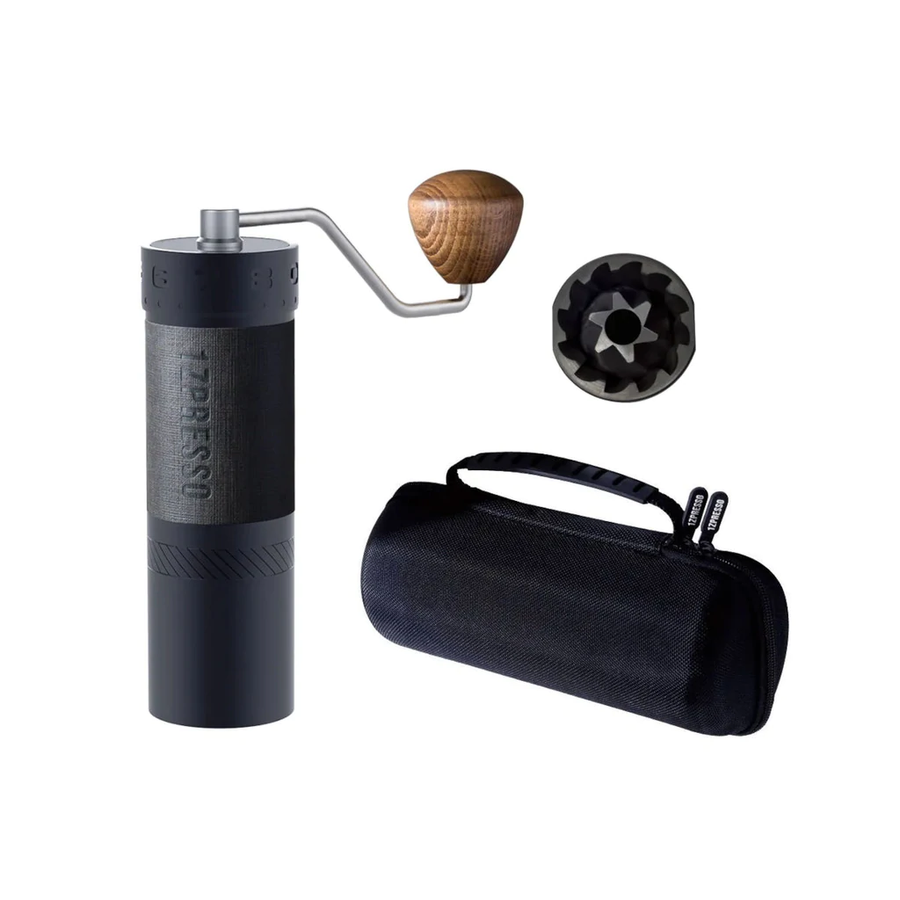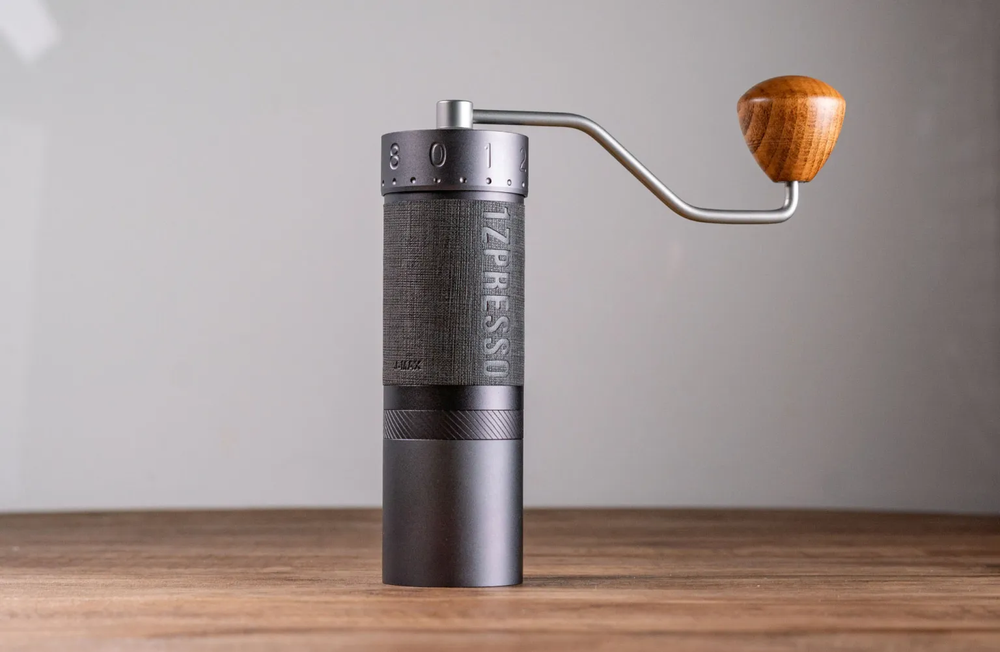How to Make Coffee in a Moka Pot: Buna Coffee's Guide for South African Enthusiasts
For coffee enthusiasts in search of the perfect brew, the moka pot stands as a timeless icon of Italian coffee culture. With its sleek design and ability to produce bold, rich flavours, it's no wonder that this brewing tool is found in 9 out of 10 Italian kitchens and countless homes worldwide. As we explore the art of making coffee in a moka pot, we'll uncover why this method is experiencing a renaissance among coffee lovers who crave a robust and aromatic cup.
The moka pot's simplicity and affordability make it an essential addition to any kitchen. Its ability to enhance the natural flavours of coffee offers an experience akin to enjoying a café-quality beverage right at home. Whether you're a seasoned coffee connoisseur or a curious beginner, mastering the moka pot promises to elevate your daily coffee ritual. Join us as we delve into the steps to achieve that perfect blend and brew.
Key Takeaways
-
The moka pot is a classical Italian coffee maker known for its ability to brew bold and rich-flavoured coffee at an affordable cost, making it a beloved tool in many homes worldwide.
-
To brew coffee in a moka pot, ensure a balanced water-to-coffee ratio, typically 1½ tablespoons of medium coffee grounds per 180 ml of water, and carefully assemble all parts to avoid leaks.
-
Achieving the best flavour involves using medium-ground coffee, controlling the heat during brewing to prevent bitterness, and potentially experimenting with spices for an enhanced taste.
-
Proper cleaning and maintenance are crucial for longevity and coffee quality; rinse daily with warm water, avoid dish soap, and regularly inspect parts such as the gasket for wear.
- For optimal performance, store the moka pot disassembled after ensuring it's completely dry, preventing moisture build-up that could lead to mould.
How to Brew Coffee with a Moka Pot
Ever wondered why the moka pot holds a special place in our hearts? It's like James Bond of coffee makers—suave, old-school, and always reliable. Let’s dive into the steps to brew the perfect cup with this Italian classic, sold by Buna Coffee and loved worldwide.
Ingredients and Equipment
-
Medium coffee grounds: We recommend starting with 15 grams (about 1½ tbsp) per 180 ml (6 fl oz) of water.
-
Water: Fill up to just below the safety valve.
- Moka pot: A stylish little number, much like the ones you’d find at Buna Coffee.
Step-by-Step Guide
Step 1: Fill with Water
Imagine the moka pot as a cute little water reservoir, all geared up to bring you joy in the form of coffee. Pour boiling water into the pot's bottom section. This speeds up brewing and keeps the pot cosy. You'll stop just below that charming safety valve which, much like a good friend, ensures you don't go overboard.
Step 2: Add Coffee Grounds
Next, fill the brewing basket to the brim with medium-ground coffee—think table salt consistency. Not too fine, lest your coffee taste as intense as a Shakespearean tragedy. Gently tap to level the grounds. It's a bit like giving a sprinkling of confetti at a wedding; just a gentle touch is all it takes.
Step 3: Assemble the Pot
Screw the top section onto the base securely. The filter and rubber gasket, like a dynamic duo, need to be in place. Imagine it as assembling a trusty backpack for a short hike - simple but essential.
Step 4: Heat it Up
Place your moka pot on medium-low heat. You want to coax out those rich aromas, not slap them into submission. As the water comes alive, it produces steam, pushing the brewed coffee up into the top chamber. It’s like a friendly version of a volcanic eruption with the promise of caffeine.
Step 5: Listen for the Gurgle
This part’s like waiting for the kettle to boil, but with a much sweeter reward. You’ll hear a soft, musical gurgling sound—your moka pot singing a tune of readiness.
Step 6: Serve and Savour
Once the bubbling quiets, remove it from the heat and serve your coffee. This isn’t just coffee; it's a celebration in a cup. Each sip should feel like that victorious moment when your favourite team scores a goals.
Cleaning Tip
After you’ve savoured every last drop, don’t forget your moka pot deserves some TLC. Rinse with warm water and let it dry to prevent rust—a happy moka pot brews happier coffee.
Isn't it fascinating how something as simple as a moka pot can turn coffee brewing into an adventure? Whether you’re braving Monday mornings or taking a leisurely Sunday, each cup brewed with your trusty moka pot is a small, joyful ritual.
Preparing the Moka Pot
Ah, the classic moka pot, a marvel of kitchen alchemy that never fails to deliver that rich, aromatic coffee that we all crave. As we journey further into the world of this fascinating device, let's get our hands dirty, or perhaps just a bit coffee-stained, as we prepare this timeless apparatus.
Understanding the Parts
Imagine this: If the moka pot were an orchestra, each part plays its role to perfection. We've got the base where water resides, the middle filter basket that cradles the coffee grounds, and the upper chamber where your brewed coffee triumphantly rises. But instead of a conductor, it's you orchestrating the masterpiece. We need to handle each component with a touch of precision and care. It's almost like piecing together a tiny mechanical puzzle. Just picture yourself as a barista, builder, and artist all rolled into one. A morning triumph, wouldn't you agree?
Water-to-Coffee Ratio
Here's where a bit of science comes into play. For those who love a morning routine that's more of a dance, the right coffee-to-water ratio is your choreography. A standard guideline is around 1½ tablespoons (15 grams) of medium-ground coffee for every 180 ml (6 fl oz) of water. These measurements ensure a bold and concentrated brew. But, just as in any culinary adventure, there's room to explore your own rhythm. Too strong? Add less coffee. Too weak? Bump it up just a bit!
On a side note, always remember to firmly but gently tap the grounds in the filter – it's like tucking them in for a hot, steamy rendezvous. Feeling the thrill yet? We certainly do.
In the words of a revered coffee expert, it's said that the magic lies in the details. Now as we proceed, why not let the moka pot take centre stage in your kitchen, inviting the rich tradition of Italian coffee culture into your home? Keep in mind, whether you're a caffeinated connoisseur or an adventurous newcomer, a well-prepared moka pot never disappoints. Shall we brew?
Brewing Coffee in a Moka Pot
Let's dive into the world of brewing coffee in a moka pot. It's an art form we adore, perfect for extracting rich and bold flavours that'll impress any coffee aficionado. If you've ever wondered how to get that cafe-like experience at home, this is your guide.
Step-by-Step Process
Have you ever felt like your kitchen is missing that classic Italian aroma? With a moka pot, you can bring that essence to life. First, fill the bottom chamber of your trusty moka pot with water just below the valve. For those who've experienced the gushing mess of overfilling, you'll know the importance of this step.
Next, scoop in 1½ tablespoons (15 grams) of medium-ground coffee into the basket. Ever tried stuffing one more spoonful, thinking it’ll make a difference? Trust us, it won't—less is more here. Gently tap the basket to even out the grounds; this ensures a smooth brew.
Assemble the pot with a firm twist. Heard the horror stories of coffee spills during assembly? Make sure that the rubber gasket and filter are snugly in place. If you listen closely when heating on medium-low, you'll hear a soft gurgle—a sign your coffee's ready.
Remove the pot from the heat promptly to avoid burning the brew. Serve the coffee into your favourite cup. We've learned that reheating can dull the flavour, so enjoy it fresh.
Common Mistakes to Avoid
Ever noticed how some folks’ coffee turns bitter? It often boils down to simple mistakes, pun intended! Our first bit of advice: resist the urge to use syphoned home-roast as the coffee grind. The moka pot thrives on medium-ground coffee—too fine, it clogs; too coarse, it lacks flavour.
Stay patient and heat the pot on medium-low. Cranking up the heat to save time usually results in a burnt taste. Are you ever tempted to rush? Just enjoy the process; it's worth it.
Cleaning might seem like a chore, but we promise it's crucial. After our own moka adventures, we advise rinsing each piece with warm water and air drying to avoid rust. A clean pot not only lasts longer but delivers consistent quality coffee every time.
So, lift your cup and take a sip. Isn't it rewarding? With these tips, our journey through the moka pot mysteries becomes not just a routine but a delightful ritual, perfect for any day. Why not explore Buna Coffee's selection of moka pots and enhance your brewing experience?
Enhancing the Flavour
Ever wonder how you can make your moka pot coffee even more irresistible? We can explore a few tips together that’ll make your morning brew the highlight of your day.
Tips for Richer Coffee
Firstly, let’s talk about the grind. We need to find that sweet spot—somewhere between fine and coarse. Think of it like finding the perfect partner: not too clingy, not too aloof. We’ve discovered that medium-ground coffee works wonders in a moka pot, as it allows the water to pass through, extracting rich flavours without bitterness. If you're familiar with making espresso, just imagine a slightly coarser grind. Our friends at Buna Coffee have an amazing selection if you're looking for a strong start.
Let’s consider temperature control. Becoming a moka pot master isn’t just about following steps; it's like cooking pasta—patience is key. We suggest turning down the heat once the coffee starts to flow to prevent it from burning. Listen for that iconic gurgle (like a friendly reminder from an old friend), and know you’re on the right track.
Water quality matters too. If you wouldn't drink it solo, don't use it in your pot. Mineral-rich water turns good coffee into great coffee because it interacts with those luscious coffee compounds.
Experimenting with Recipes
Have you ever tried something out of the ordinary with your moka pot coffee? Together, we could explore adding a twist of spice. Picture this: you and a friend are chatting about trying cardamom or cinnamon to capture the zest of an exotic coffee house at home.
Experimentation can be like an adventure. Customising your coffee could be as easy as varying the water-to-coffee ratio. We often ask ourselves, "How bold do we want our morning coffee?" A dash more coffee or a tad less water can quickly change the whole experience. Remember, every tweak tells a different story.
Let’s chat about infused flavour—and we don't mean adding anything wild. Imagine an orange peel alongside your coffee, offering zing without overpowering. It’s subtle magic, like finding a secret ingredient in a family recipe. So get creative!
Let your inner barista thrive and think of your moka pot as a canvas for coffee expression. Visit the Buna Coffee collection for inspiration and elevate your morning rituals with fresh and exciting flavours.
Cleaning and Maintenance
Let's dive into an often overlooked but crucial part of owning a moka pot: keeping it clean and well-maintained. Have you ever heard the clatter of a sticky pot? Not as charming as the gurgle when it's brewing, right? From our experience, a properly maintained moka pot not only lasts longer but also produces superior coffee. Plus, it's a lot nicer to look at!
Daily Care: Rinse the pot with warm water after each use to remove coffee residue. Avoid dish soap, as it leaves a lingering taste that affects your brew. Although it might seem daunting initially, you'll get the hang of it faster than you’d think.
Deep Clean: Over time, natural oils build up inside the pot. Once a week, or when you feel it needs some TLC, dismantle the parts and scrub them gently with a soft brush. We've found that a mixture of water and baking soda works wonders for stubborn stains.
Gasket Check: The gasket, that little rubber ring, is a hero in disguise. Without it, your pot's magic won't happen. Inspect it regularly for wear and tear and replace it every year or sooner if needed. A worn-out gasket may lead to a less than satisfactory brew.
But wait – have you ever tried cleaning an old moka pot that hasn’t seen water in a month? Here’s a conversation that might occur:
-
You: "Did I leave this moka pot in the wilderness? Why’s it so grimy?"
-
Us: "Let’s arm ourselves with warm water, a gentle sponge, and a sprinkle of baking soda."
Storage Wisdom: Store your moka pot disassembled to avoid trapping moisture, which could lead to mould. Trust us, a surprise mould encounter is never pleasant.
At Buna Coffee, where our pots have witnessed countless cups brewed to perfection, we often say maintenance is part of the ritual. So, what do you think? Ready to treat your moka pot with royal care?
Conclusion
Mastering the moka pot is more than just brewing coffee; it's about embracing a tradition that enriches our daily rituals. With each brew, we connect to a rich heritage while crafting a personalised experience. The moka pot invites us to experiment, to savour, and to refine our coffee-making skills, transforming a simple act into a delightful art form. By maintaining our moka pots with care, we ensure each cup is as rewarding as the last. Let's continue to explore, create, and enjoy the robust flavours that only a moka pot can deliver, making every coffee moment truly special.
Frequently Asked Questions
How do I brew coffee using a moka pot?
To brew coffee with a moka pot, fill the bottom chamber with water up to the safety valve, add medium-ground coffee to the filter basket without pressing it down, assemble the pot, and place it on a low heat. Once you hear the bubbling sound, indicating that brewing is nearly complete, remove it from the heat and pour the coffee. This method ensures a rich, aromatic coffee experience.
What grind size is best for a moka pot?
The ideal grind size for a moka pot is medium-fine. It should be coarser than espresso but finer than drip coffee. If the grind is too fine, it can clog the filter; if too coarse, it may result in a weak brew. Aim for a consistency similar to table salt for the best results.
How do I clean my moka pot?
Clean your moka pot with warm water after each use, avoiding dish soap as it can leave a lingering taste. For deeper cleaning, disassemble weekly and scrub with a mixture of water and baking soda to remove any stubborn stains. Regularly check the gasket and replace it if worn to maintain optimal brewing performance.
Can I use espresso coffee in a moka pot?
Yes, you can use espresso coffee in a moka pot, but ensure it is ground to a medium-fine consistency. Overly fine espresso grounds can clog the filter, while a medium-fine texture allows for proper water flow and extraction, offering a balanced, bold flavour.
Why does my moka pot coffee taste bitter?
Bitter coffee may result from using too much coffee, a grind that's too fine, or overheating the pot. Check the coffee-to-water ratio, aim for a medium-fine grind, and use moderate heat. These adjustments can help achieve a smoother, less bitter cup.
How can I enhance the flavour of my moka pot coffee?
Enhance your moka pot coffee by experimenting with grind size, water quality, and ratios. Use filtered water and adjust the water-to-coffee ratio for taste preference. Try adding spices like cinnamon, or use specialty beans for varied flavours, creating a personalised coffee experience.
What is the lifespan of a moka pot?
With proper care, a moka pot can last for several years. Regular cleaning, checking the gasket, and avoiding dishwasher use will extend its lifespan. Store it disassembled to prevent moisture build-up, ensuring it remains a trusty companion in your coffee-making rituals.




